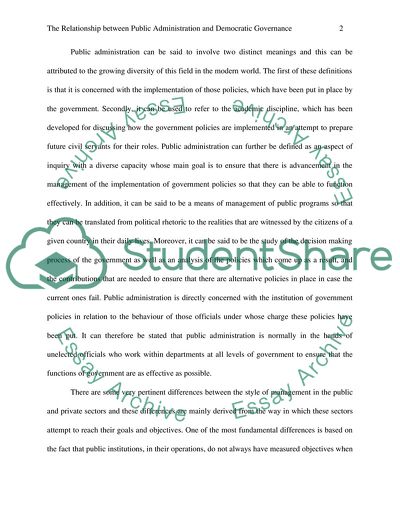Cite this document
(The Relationship between Public Administration and Democratic Governance Essay Example | Topics and Well Written Essays - 2000 words - 1, n.d.)
The Relationship between Public Administration and Democratic Governance Essay Example | Topics and Well Written Essays - 2000 words - 1. https://studentshare.org/politics/1808342-what-is-the-relationship-between-public-administration-and-democratic-governance
The Relationship between Public Administration and Democratic Governance Essay Example | Topics and Well Written Essays - 2000 words - 1. https://studentshare.org/politics/1808342-what-is-the-relationship-between-public-administration-and-democratic-governance
(The Relationship Between Public Administration and Democratic Governance Essay Example | Topics and Well Written Essays - 2000 Words - 1)
The Relationship Between Public Administration and Democratic Governance Essay Example | Topics and Well Written Essays - 2000 Words - 1. https://studentshare.org/politics/1808342-what-is-the-relationship-between-public-administration-and-democratic-governance.
The Relationship Between Public Administration and Democratic Governance Essay Example | Topics and Well Written Essays - 2000 Words - 1. https://studentshare.org/politics/1808342-what-is-the-relationship-between-public-administration-and-democratic-governance.
“The Relationship Between Public Administration and Democratic Governance Essay Example | Topics and Well Written Essays - 2000 Words - 1”. https://studentshare.org/politics/1808342-what-is-the-relationship-between-public-administration-and-democratic-governance.


